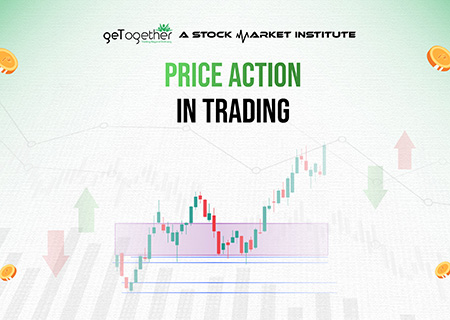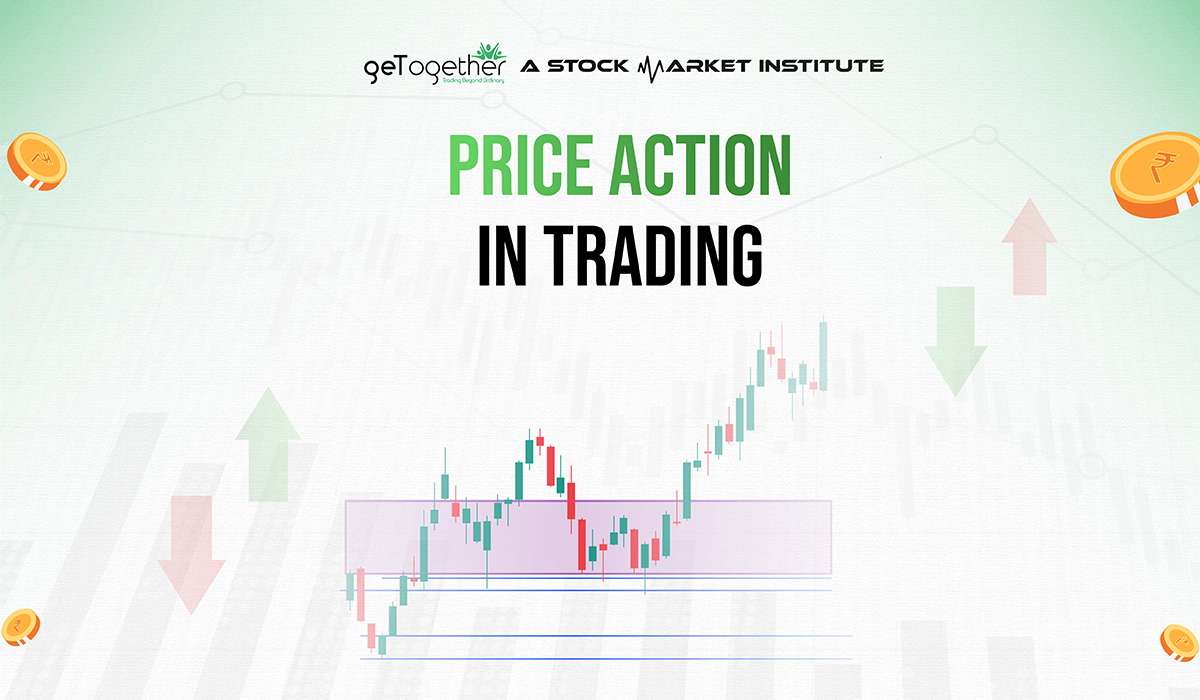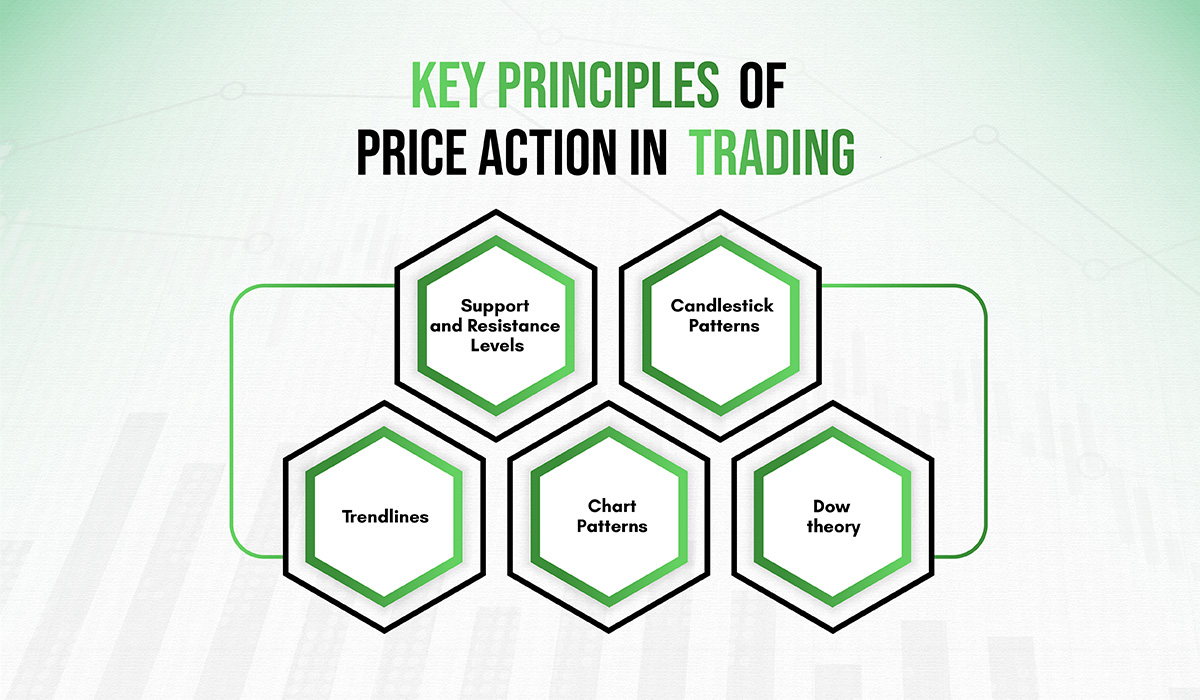Price Action in Trading


Price action in trading is a famous trading method that includes analyzing and giving the result of prices on a graph, some traders even trade options based on price action. Instead of relying on indicators or other tools for technical analysis, this strategy focuses on the actual price movement of an asset. By noticing and interpreting cost designs, traders can acquire important experiences in market elements and take informed investment decisions.
Understanding Price Action in Trading
The term “price action” refers to how prices on a chart move over a specific period. It involves demand and supply to interpret price action and analyze the patterns that emerge from observing an asset’s closing, high, and low prices. Cost activity brokers depend on the conviction that market members’ feelings and opinions are reflected in cost developments, prompting recognizable examples and patterns.
Key Principles of Price Action in Trading

To effectively utilize price action strategies, traders need to understand and apply several key principles:
1. Support and Resistance Levels
Support and resistance levels are key areas on a price chart where the price has historically shown a tendency to reverse or stall. Predicting future price movements requires analyzing, price action patterns, trends, and support & resistance levels. Traders can maximize their profits and make well-informed decisions by understanding demand and supply dynamics. Traders often use these levels to identify entry and exit points, set stop-loss orders, and determine potential profit targets.
2. Candlestick Patterns
Price action analysis continually uses candlestick charts. Candlestick patterns, such as the hammer and engulfing patterns, provide valuable insights into the sentiment of the market and works as an add-on confirmation that can point to potential reversals or continuations.
3. Trendlines
On a chart, trendlines connect consecutive highs or lows. They enable traders to make decisions based on the trend’s continuity or potential reversal by assisting in the identification of the trend’s path and strength.
4. Chart Patterns
Price movements create chart patterns such as head and shoulders, double tops, and triangles that can point to breakouts or reversals. Price action traders frequently use these patterns to find trading opportunities on charts.
5. Dow theory
The Dow theory of technical analysis is a methodology used to analyze and predict trends in the stock market. it relies on analyzing the movements of two indices.
Price Action Trading Strategies
Price action trading strategies can be applied to various trading techniques. Here are some commonly used price trading strategies:
1. Trend Trading
Trend Trading identifies and trades with the general trend. Traders look for higher highs and higher lows in an uptrend or lower highs and lower lows in a downtrend to enter trades in the direction of the trend.
2. Breakout Trading
Breakout trading involves identifying essential support or resistance levels, and patterns and trading the breakout when the price moves beyond those levels. Traders aim to capture price movements that often occur after a breakout.
3. Reversal Trading
Reversal trading focuses on identifying potential trend reversals while trading. Traders look for signs of exhaustion in an ongoing trend, such as overextended price moves or bearish/bullish candlestick patterns, to enter trades in the opposite direction which is also known as catching a falling knife.
4. Range Trading
Range trading involves remembering price ranges where the price tends to oscillate between support and resistance levels. Traders buy near support and sell near resistance, taking advantage of the price range’s predictability.
Also Read: Adjusted Closing Prices
Tips for Successful Price Action in Trading
To enhance the usefulness of price action trading, consider the following tips:
- Stay Patient and Disciplined: Price action analysis requires patience to wait for high-probability setups and discipline to stick to the trading plan.
- Trading Psychology: Develop a strong mindset to handle the emotional aspects of trading, such as fear and greed, which can influence your decision-making.
- Risk Management:- Traders should do risk management to avoid losses on investments.
Conclusion
Price action in trading is a strong strategy that enables traders to analyze price movements on charts to make educated decisions. Traders can gain a competitive advantage by utilizing appropriate tools, employing appropriate strategies, and comprehending key principles. However, to consistently succeed with price action, patience, risk management, and ongoing skill development are essential.
FAQs
What distinguishes technical analysis from price action in trading?
While technical analysis includes a broader range of tools and indicators, price action is a subset of technical analysis that focuses solely on analyzing price movements and patterns.
Is price action in trading appropriate for inexperienced traders?
price action can be mastered by traders at all ability levels. However, before risking real money, novice traders should spend time learning the fundamentals and practicing in a simulated trading environment.
Are there particular timeframes for price action in trading that work best?
Cost activity examination can be applied to any period, from tick diagrams to every day or week-after-week outlines. The trader’s preferences and trading style determine the option.
Can price action in trading be automated?
While price action trading relies on subjective analysis, some traders develop automated systems that incorporate price action principles. However, human discretion is often valuable in interpreting price patterns accurately.
How long does it take to become proficient in price action in trading?
The time required to become proficient varies depending on the individual’s dedication, practice, and prior trading experience. Consistent effort and continuous learning are key to mastering price action trading.
CATEGORIES



 Facebook
Facebook  Instagram
Instagram  Youtube
Youtube 
